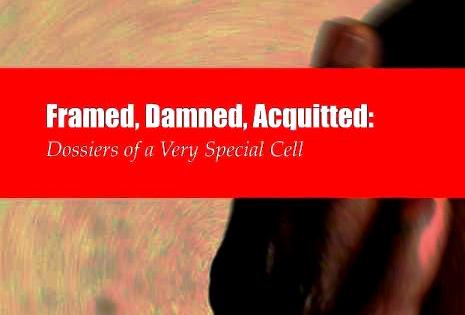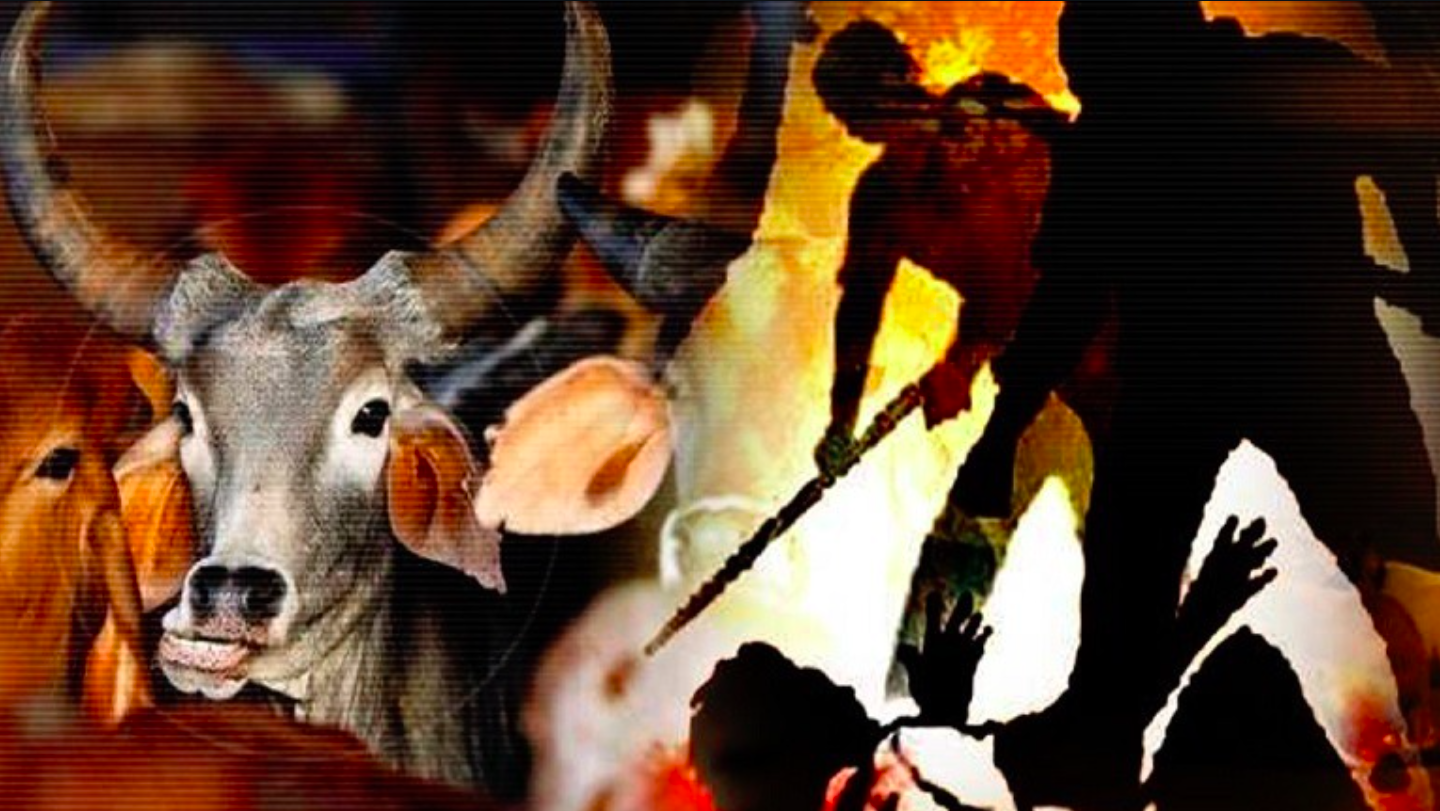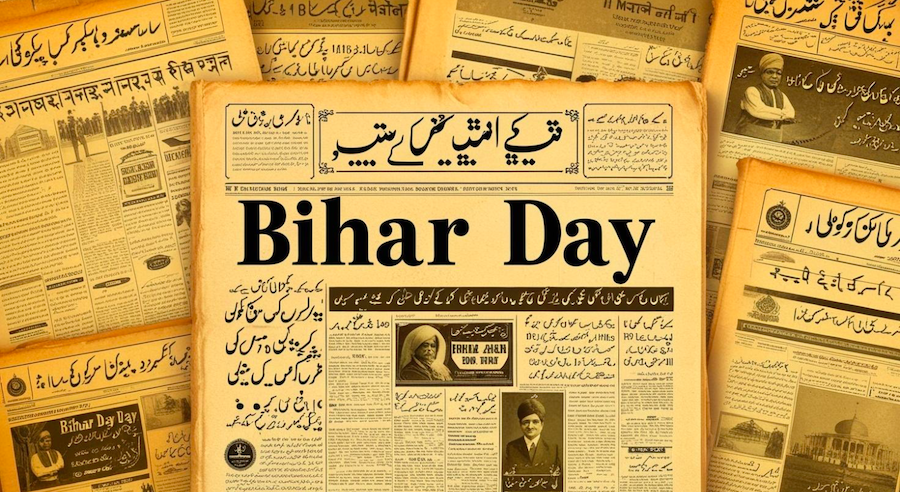As 16 terror cases end in acquittal the English press is guilty of giving in to the dubious claims of the infamous Special Cell. JYOTI PUNWANI wonders why reporters never question police claims…
Will the English press ever again report verbatim what the Delhi Police’s Special Cell tells them?
The Jamia Teachers’ Solidarity Association’s just-released report on 16 cases of terror filed by the Special Cell that ended in acquittal, is an indictment not just of the functioning of the Special Cell, but also of the English press. The report cites examples of reports in national newspapers such as The Times Of India, The Hindu, The Indian Express, and Hindustan Times, which carried verbatim, often without the use of the word “alleged”, the version given by the Special Cell at press conferences where often, the arrested innocents were produced as “hard core militants’.
Among the many paraded this way was 24-year-old Kashmiri Imran Kirmani, an aeronautical engineering graduate who had just landed a job in Delhi. His background came handy for the Special Cell to describe him as “part of an LeT module” planning to carry out a “9/11 plot”. “Prize catch” was the caption given by The Hindu to his picture on page one, surrounded by Special Cell plain clothesmen.
Four years later, the judge acquitted Kirmani. “And when I was released, there was no media, no cameras waiting to tell the world that I was innocent. It wasn’t a story,” Kirmani told the Kashmir correspondent of The Indian Express Muzammil Jaleel.
The JTSA report cites only the Express as having bothered to talk to Kirmani. But The Telegraph’s Muzaffar Raina did so too. The paper carried the story on page one.
Not that this in any way compensated for Kirmani’s trauma. “My dream (of becoming an aeronautical engineer) has died,” he said more than once to Jaleel. “Who will give me a job now?”
It wasn’t just Delhi’s Special Cell that ruined this blameless young man’s future. The English press also played a part.
This columnist has tried for years to find an answer to the question: why do reporters implicitly believe the police when they claim breakthroughs in “terror” cases? Because the police bear the authority of uniform? They are the ones who should know?
Even when the country’s first big terror strike took place on March 12, 1993 in Mumbai, there were doubts whether everyone picked up was part of the conspiracy. At that time, the lawyer of one of those arrested approached me with his client’s story. His client claimed that his only offence was that he had rented out a scooter, something he did everyday to strangers. How was he to know what it would be used for? (It was used to plant a bomb.) The TOI refused to publish the story, which was based entirely on the lawyer’s plea filed in court. The man was eventually discharged after spending three years in jail.
This was just after the 92-93 Mumbai riots, wherein the Mumbai police had shown just how aligned its men were with the Shiv Sena. The Times’ reportage of the riots had exposed some of this and earned it the abuse “Times of Pakistan” from the RSS. But riots were one thing, simultaneous bomb blasts across the city, killing random innocents, were a different kettle of fish. Would publishing that story have made the Times look like it was supporting the terrorists? Is that what stops newspapers from expressing doubts about police claims?
April 2006 should have been a turning point for investigations into bomb blasts. That was when the Nanded blasts took place and the RSS hand in the bomb blasts became clear. But even after Nanded, the police stuck to its only-Muslims-are-terrorists theory. Given the well-known anti-Muslim prejudice of the police, that was understandable. But what prevented the press from questioning this theory after April 2006?
Indeed, what prevents the press till today from picking holes in theories put out by our investigative agencies when it comes to crimes allegedly committed by Muslims? Why do reporters become “police stenographers” as the JTSA report calls them?
After the 2006 serial train blasts in Mumbai all newspapers faithfully reported the theory given out by the ATS. The seven bombs were assembled in a tiny room in a Govandi slum, open to all passers by. Then, from the north-east of Mumbai, they were carried to the north-west, to Bandra. They were kept in pressure cookers. These pressure cookers were kept in train compartments. Whatever you say, sirs. Never mind if the final charge sheet in the 2006 serial train blasts case has no mention of pressure cookers. Pakistan was involved, said headlines. Never mind that when it came to actually presenting evidence to Pakistan, the ATS developed cold feet.
The most bizarre aspect of the 2006 train blasts is that another branch of the Mumbai police, the Crime Branch, discovered in 2008 that quite a different set of persons were behind these blasts. The ATS had laid the blame on SIMI’s door. But an alleged Indian Mujaheedin member arrested for a series of blasts in 2008, reportedly “confessed” to the Crime Branch, headed by the legendary Rakesh Maria, that it was the IM that was behind the train blasts. Both police units stuck to their respective claims. In 2009, this man who “confessed”, Sadiq Shaikh, was discharged by the court on an application filed by the ATS which said he had no role in the train blasts, a crime to which he had reportedly “confessed”!
And these are the agencies we blindly trust. Among them is the Delhi Police Special Cell, as high profile as Maharashtra’s ATS, and, as the JTSA report shows, as dearly beloved of the Delhi press.
Sensational
On September 23, 2007, The Times of India carried a news item titled: “Indian Intelligence informer spills the beans”. The report was sensational. It quoted a letter from Tihar Jail by an ex-IB informer detailing how IB, working with the Delhi Police’s Special Cell, plants its own “jehadi maulvis” to lure Muslim youth to commit terrorist acts. The CBI, directed by the Delhi High Court to investigate the case in which this informer was arrested by the Special Cell as an Al Badr terrorist, had corroborated the most important accusations made by the informer, said the report.
In November 2008, the CBI filed a closure report in the case, gave the two accused a clean chit and recommended legal action against three sub-inspectors of the Special Cell: Ravinder Tyagi, Vinay Tyagi, and Subhash Vats, for “fabricating and planting evidence to implicate” the accused “for an oblique motive.” In its closure report, the CBI revealed that the mobile phone records of one of the accused showed that he was in constant touch with IB officers.
Despite the Times following this story, these sensational findings were not widely reported in the English press. Even the Times did not do any larger article based on this “mind-numbing” report. (This phrase was used by the Times to describe one of the many so-called terror conspiracies solved by the Special Cell.) However, subsequent developments in the case were reported, including a complaint by CBI officer Santosh Kumar that one of the indicted Special Cell men had threatened him. So it can be safely said that the entire English press was aware of the CBI’s findings against the Special Cell.
In February 2011, Additional Sessions Judge Virender Bhat, acquitting seven alleged Kashmiri terrorists, ordered an FIR to be registered against the Delhi Police Special cell’s Sub Inspector Ravinder Tyagi and three other sub-inspectors for framing the accused. He also ordered the Delhi Police Commissioner to hold an inquiry against the four policemen, who he said, had “brought shame and disrepute to the entire Delhi police force”.
Both the Asian Age and The Indian Express reported this judgment, with the latter even interviewing the Kashmiris who were acquitted. But again, there was no follow-up on this indictment by the court against such high-profile policemen. By this time, Ravinder Tyagi had won a President’s medal; his name had also figured in the infamous Batla House encounter.
In January 2012, Amir Khan was acquitted after spending 14 years in jail for a total of 19 cases foisted on him. Almost every paper published the story of his frame-up by Delhi’s Special Cell and his acquittal in 17 of them.
Yet, despite being aware of all these indictments and irregularities, when the Delhi Police Special Cell arrested journalist Syed Kazmi in March this year for the bomb attack on the car carrying an Israeli diplomat’s wife in Delhi, all newspapers faithfully reproduced the police version with the word “alleged” featuring occasionally–the moped left in Kazmi’s house by the bomber; the $ 5000 first installment received by Kazmi from the bombers… The team in charge of the case included many familiar names whose earlier cases had ended in acquittal. But no scepticism was voiced.
Kazmi’s son’s version was of course reported a few days later.
Speculation
Again, in December 2010, when two alleged Hizb-ul-Mujaheedin members were arrested from Dehradun, reports speculated whether the Indian Military Academy was the target. None of the reports bothered to mention that not even a year earlier, four youth arrested for allegedly planning a terror strike on the IMA had been honourably acquitted.
There appears to exist a marked sympathy towards the Special cell, which emerges in the frequent use of words such as “Special Cell dealt a blow” or “Special Cell resurrects with triple hit” (this from TOI). This report rejoiced at the return of ACP Sanjeev Yadav to the Cell. Yadav features in many of the cases documented by the JTSA report.
When courts and respected investigative agencies accuse the same police unit more than once of framing innocents, and the press, instead of highlighting these indictments, plays them down, how can the victims so framed get the publicity they deserve? Two cases cited in the JTSA report on the acquittal of Ayaz Ahmed shah, an alleged Kashmiri terrorist, are important here.
An acquittal does not mean that the accused is innocent. However, only after going through the judgment can you conclude whether the acquittal was based on technicalities or there was just no case against the accused. Quoting the judgment, the JTSA report shows that Ayaz Ahmed Shah was acquitted after the prosecution’s story was found riddled with holes. The depositions of Inspector Mohan Chand Sharma, the inspector gunned down in the Batla House encounter, and other members of the Special Cell team who arrested Shah, were found riddled with discrepancies and contradictions. Shah had been picked up on the basis of a tip off from an informer. But under cross-examination, the policemen admitted that the informer had neither revealed the suspect’s name nor description!
Yet, Midday reported on Shah’s acquittal with this headline: “Another terrorist goes free”, while The Telegraph described Shah as an “outlaw” who “slipped through”.
However, newspapers do follow-up on acquittals. Tehelka specially, does so regularly. Doing so is neither compensation nor a favour to those released. What is needed is simply news exposing the way our police have made it their dharma to frame innocent Muslims with terror charges.
Post Script:
The Delhi Police Special Cell in a rebuttal to the JTSA report claims that “six cases out of 16 referred to in the compilation have actually ended in conviction, while one case is still pending trial”.(Reported in The Hindu, September 20).
However, responding to this, the JTSA has listed out each of the 16 cases and pointed out that only in one of them were four out of the ten accused convicted of terror charges. The convictions that have eben secured in other cases have been under the Arms Act or the Explosives Act, not on the charges of terrorist consiracy or waging war against the State. “Courts have clearly held that there was nothing to prove that the accused were members or activists of terrorist organizations, or that they intended to carry out terror attacks,” says the rebuttal. (Courtesy: The Hoot)










